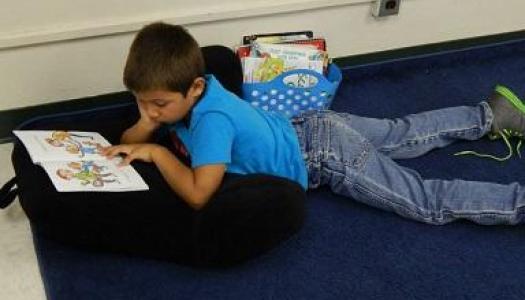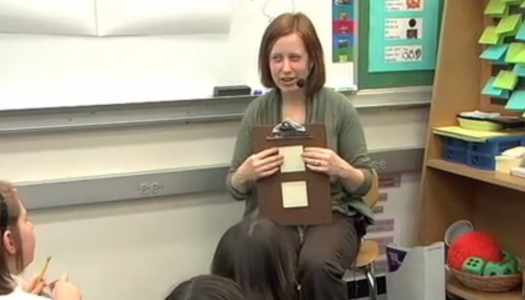All-Important Evidence, Part 2 of 2
Join Our Community
Access this resource now. Get up to three resources every month for free.
Choose from thousands of articles, lessons, guides, videos, and printables.

Thirteen additional ways for learners to use text evidence in their literacy work:
-
Book Buddies: Promote the use of text evidence in student-centered discussions such as book clubs. Provide prompts such as "According to the text ?"or "Based on what the author says ?" or "On page xx, the author explains ?" to help students get started. Post the prompts for easy student reference. Train students to ask each other for text evidence in their conversations about books.
-
CAFE Conferences: Encourage students who are working on comprehension strategies to offer text evidence during one-on-one conferences. Listening to the ways they use text evidence is a window into their thinking and how well they are comprehending what they read. Conferences are an excellent time to coach students in how to cite text evidence.
-
Classroom Community: Make citing text evidence part of your classroom learning community. Provide students with frequent opportunities to use evidence from the text, including photographs and illustrations, during appropriate strategy groups, guided reading groups, and whole-class discussions. As readers come to recognize the importance of such evidence, they will begin to offer it without teacher prompting.
-
Evidence Expedition: Create text-dependent questions and then invite students to go on an expedition for evidence as they read. Children can work in partnerships to answer text-dependent questions. For a variation, have intermediate-grade students create five text-dependent questions about a brief text. Then ask them to trade papers with a classmate and begin searching for evidence to answer the questions.
-
Helpful Highlighting: Give students a short piece of text. Write two to three text-dependent questions on a whiteboard or overhead, using a different color for each question. Encourage students to find the text evidence that proves their answer. Ask them to highlight the answer using the same color as the corresponding question. Students can also write notes about the evidence in the margins.
-
Motivating Mysteries: There's nothing better than a mystery to motivate young readers/listeners to hunt for clues in the form of text evidence. Share a short and suitable mystery book with the class; have children chart clues as they read or listen. At the end of the book, invite them to talk about how the text evidence (clues) helped them to solve the mystery.
-
Quality Quotations: Have intermediate-grade students use a quotation from the text to support their thinking when they speak or write. Model how to introduce a writer's words, state the quotation, and explain it in the sentences that follow. Effective use of quotations will be a valuable skill in elementary school, middle school, and beyond.
-
Read-Aloud Wrap-Up: After a read-aloud, ask students to give text evidence by asking questions such as: "What in the text supports your idea?" or "What did the author say that supports your thinking?" or "Which lines from the poem make you feel that way?"
-
Reading Response: Ask students to include text evidence in written responses to reading. Encourage them to underline text evidence and record the page number(s) where it was found. Include a rubric that awards points for effective use of text evidence.
-
Research Reports: Demonstrate to children how to integrate text evidence from sources in a short research report. Begin by writing a shared report with the class. Teach intermediate-grade students to take careful notes, create a list of sources, and write a citation for each work used.
-
Search and Cite: Scour your school book room for both fiction and informational big books. Use a big book for a whole-class demonstration about finding text evidence. Involve students in locating specific information to answer text-dependent questions. To give students more independent practice, write text-dependent questions on sticky notes and place them in the books. Have student partners work together to find answers to their questions in the big books.
-
Two-Column Notes: Show students how to use a two-column graphic organizer to record their thinking as they read. The first column can be labeled "What I Know" and the second "How I Know." In the first column, students create a list of their important noticings about the text. Corresponding text evidence in the form of key phrases, sentences, and direct quotations can be listed, along with page numbers where they found them, in the second column.
-
Wordless Wonders: Although there are many excellent wordless picture books for beginning readers, this genre has appeal for older readers as well. Your school librarian can recommend engaging wordless books for both primary and intermediate readers. As an introduction to looking for text evidence, or just for a change of pace, children can respond to teacher questions using proof from the pictures.







